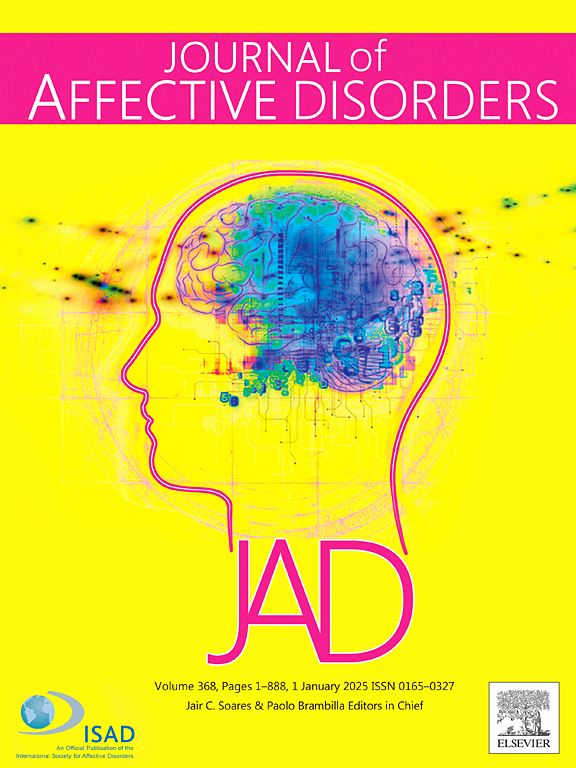A network analysis of body dysmorphic and obsessive-compulsive symptoms among individuals with and without exposure to trauma
IF 4.9
2区 医学
Q1 CLINICAL NEUROLOGY
引用次数: 0
Abstract
Background
BDD and OCD symptoms often co-occur, but the associations between specific symptoms remain unclear. Furthermore, current research suggests that the clinical presentation of emotional disorders can differ in individuals who self-report exposure to trauma, but it is unclear whether this extends to BDD and OCD. The current study aimed to: (a) investigate associations between individual OCD and BDD symptoms and (b) determine whether symptom networks differ in those with self-reported trauma compared to those without self-reported trauma.
Methods
Participants (N = 3127) were drawn from the Genetic Links to Anxiety and Depression (GLAD) Study and had completed validated self-reported questionnaires to assess BDD and OCD symptoms, and childhood and adulthood experiences of trauma. Network analysis was used to investigate associations between seven BDD symptoms and six OCD symptom domains. Networks of reporters and non-reporters of lifetime trauma were compared using the network comparison test.
Results
BDD and OCD symptoms clustered distinctively with some bridging associations between them. The strongest bridging edges highlighted an association between three core BDD symptoms and the OCD domain of obsessional thoughts. BDD and OCD networks of reporters and non-reporters of lifetime trauma did not differ.
Limitations
Cross-sectional design, meaning causality cannot be inferred.
Conclusions
The findings suggest that BDD and OCD symptoms cluster distinctively, with some bridging associations between core BDD symptoms and obsessional thoughts. Future research is needed to understand the mechanisms underpinning this relationship.
求助全文
约1分钟内获得全文
求助全文
来源期刊

Journal of affective disorders
医学-精神病学
CiteScore
10.90
自引率
6.10%
发文量
1319
审稿时长
9.3 weeks
期刊介绍:
The Journal of Affective Disorders publishes papers concerned with affective disorders in the widest sense: depression, mania, mood spectrum, emotions and personality, anxiety and stress. It is interdisciplinary and aims to bring together different approaches for a diverse readership. Top quality papers will be accepted dealing with any aspect of affective disorders, including neuroimaging, cognitive neurosciences, genetics, molecular biology, experimental and clinical neurosciences, pharmacology, neuroimmunoendocrinology, intervention and treatment trials.
 求助内容:
求助内容: 应助结果提醒方式:
应助结果提醒方式:


